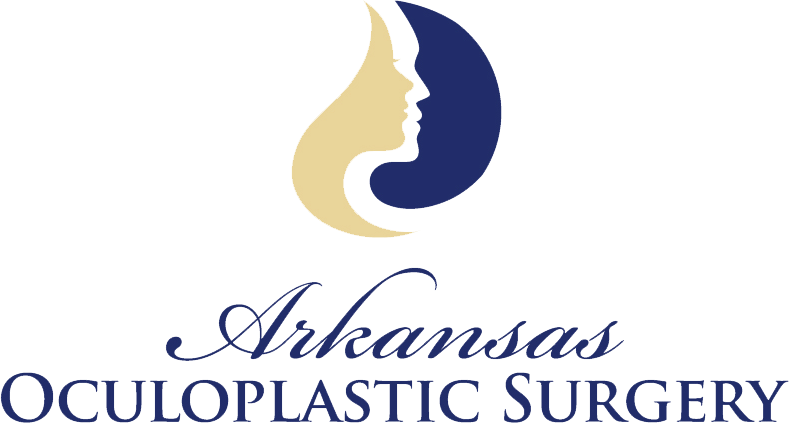
Skin Cancer Little Rock
Little Rock Oculoplastic & Facial Cosmetic Surgeon
Overview
If you have recently been diagnosed with skin cancer of your eyelid or face, or have concerns that you may have skin cancer, we want you to be assured that Dr. Brock and his staff understand your concerns. Dr. Brock and his staff are committed to offering the very best oculoplastic and facial surgery services needed for your treatment.
Did you know that skin cancer is the most common form of cancer in the United States? Skin cancer involves abnormal growths of skin cells that can form anywhere on the body, but most frequently appear on skin that is exposed to the sun. The eyelids and face are very common locations to develop skin cancer. There are more than a million new cases of skin cancer in the US each year. Those most often affected are older people, but as the number of new cases has increased sharply, the average age of patients affected has also decreased. Dr. Brock has seen some patients affected in their 20’s and 30’s.Although most cases of skin cancer can be successfully treated, it is still important to keep skin safe and healthy and try to prevent this disease.
Actinic Keratosis (AK’s)
Actinic Keratoses (the plural of actinic keratosis) are very common on the head and neck. Technically, actinic keratoses are not a skin cancer but are often referred to as “pre-cancers.” This is because if they are left untreated, they may develop into squamous cell carcinomas (discussed below). One must be careful to treat these with appropriate destruction or removal, because sometimes, they may already be harboring areas of squamous cell carcinoma.
Actinic keratoses arise as crusting growths. They may appear to be tan, pink, red or skin-colored. They can become uncomfortable or irritating when they are inflamed, but many times there is no irritation and they are only identified by sight or tactile inspection. They are common on the scalp, neck, tops of hands and forearms, chest, shoulders, face, ears, lips and eyelids. In there early stages they will sometimes disappear, only to recur again.
These are frequently treated by distruction with scraping, radio frequency ablation, laser ablation, or freezing with liquid nitrogen, to name the most common methods. When there is a high suspicion that they harbor cancer, it may be best to completely excise them with clear surgical margins. Sometimes topical chemotherapeutic medications like Effudex are prescribed. For patients with a large number of actinic keratoses on the face, chemical peeling (eg. Jessner peel, TCA peel) offers a very effective treatment superior to many other methods.
There are four major types of skin cancer that affect the face and eyelids. These major types are:
Basal Cell Carcinoma (BCC)
Basal cell carcinoma is the most common type of skin cancer and accounts for over 75 percent of all skin cancer cases in the United States. This type of cancer rarely spreads and can usually be removed easily in the early stages. When small skin cancers are removed, the scars are usually cosmetically acceptable. If the tumors are very large, a skin graft or flap may be used to repair the wound in order to achieve the best result. Most cases are caused by long-term exposure to ultraviolet rays but people with fair skin and a personal or family history of skin cancer may be at a greater risk. Although most cases occur in sun-exposed areas, they can develop on unexposed areas at times. In some cases these cancers arise where patients have had contact with radiation, areas of chronic irritation or chronic inflammation, burns, scars or infections.
Basal cell carcinoma affects the top layer of the skin known as the epidermis. It may appear on the skin as a new growth that bleeds easily or does not heal quickly and may be white, pink, flesh-colored or brown. Very common areas include the eyelids, ears, nose, face, scalp, neck, shoulders and chest. Treatment to remove skin cancer from the eyelid and face is generally treated by excision. On the eyelid and other important functioning areas, it is very important to remove the cancer completely and to decrease the likelihood of recurrence. Recurrence rates on the eyelid are very high without a clear margin of greater than 2mm to either side of the cancer. Basal cell carcinomas are often a recurring condition, so preventive measures and regular body screenings should always be the rule.
In rare cases, a very large or aggressive basal cell cannot be completely resected or perhaps the patients has other circumstances in which surgery of any kind is too risky or impractical. For these few patients, sometimes a medicine called vismodigib (Erivedge) can be given. If Dr. Brock determines you may be a candidate for Erivedge, he will consult a dermatologic surgeon for their opinion, to prescribe the medicine and to follow your progress along with him.
Squamous Cell Carcinoma (SCC)
Squamous cell carcinoma is a common form of skin cancer that affects over 250,000 people in the United States each year. It is usually caused by excessive, long-term exposure to ultraviolet rays from the sun and most frequently affects people over the age of 50 and with pale skin. Squamous cell carcinoma does not cause pain or any other symptoms in it’s earliest stages, but develops as a growth on the skin, usually in sun-exposed areas. These growths can vary in appearance and may be new or a change to a pre-existing scar. HIV, other states of immune deficiency, chemotherapy, anti-rejection drugs in patients who have had organ transplants, all make it harder to fight off skin cancers, including squamous cell carcinoma.
Squamous cell carcinoma affects the area just below the outer surface of the skin. Like basal cell carcinoma, squamous cell carcinoma of the eyelid and other highly functioning areas is frequently treated with excision. Skin cancer can usually be treated successfully if detected and removed quickly. It is important to take precautionary measures such as avoiding sun and performing regular skin checks to prevent new cases of squamous cell carcinoma.
Melanoma
Melanoma is a skin cancer of the melanocytes, the cells that make melanin (brown pigments). Accounting for more than 80 percent of all skin cancer deaths, melanoma is the deadliest form of skin cancer. Early detection and treatment greatly increase the likelihood of total freedom from melanoma. Since 1950, melanoma incidence has increased more than 20-fold in older men, and the rate of associated mortality in men has tripled (Geller, et al).
The earliest, most common symptoms of melanoma are abnormal growths on the skin or changes in existing moles. It is therefore important to seek medical attention upon noticing any abnormal changes in your skin.
Melanoma is usually diagnosed through a full skin exam and a biopsy of the suspicious-looking area. If melanoma is found, a stage will be assigned to it; stage I melanoma is the earliest stage, while stage IV indicates that the cancer has spread elsewhere on the body, making treatment more difficult. Thickness of the cancer is the most important factor that correlates to survival. Thickness is usually recorded in millimeters (mm) and is referred to as Breslow’s depth. An alternative way to classify depth is by Clark’s level (this is expressed in Roman numerals with level I being the thinnest and V being the thickest). If melanomas are classified as in situ, it means they have not invaded beyond the most superficial layer of skin. There is a nearly 100% survival rate with this stage, when the melanoma is properly and expeditiously removed. Once the cancer has invaded beyond the most superficial layer of skin, the prognosis becomes worse and worse as the invasion becomes deeper or thicker.
Melanoma is typically treated by surgically removing the melanoma; later stages of melanoma may also include chemotherapy or radiation therapy to destroy all cancer cells. Sometime a sentinel lymph node biopsy is needed for staging by a general surgeon.
Sebaceous Cell Carcinoma
Carcinoma of the sebaceous glands is a highly malignant and potentially lethal tumor that arises from the meibomian glands and other glands of the eyelid, conjunctiva or face. Separate upper and lower eyelid tumors can occur in 6-8% of patients. Patients are commonly older than 50 years, but these cancers have been reported in younger patients as well.
These tumors are often diagnosed when they are advanced because they frequently masquerade as benign eyelid diseases. They may look very similar to chalazia, chronic blepharitis, ocular cicatricial pemphigoid, or superior limbic keratoconjunctivitis. They can also appear similar to BCC or SCC.
Patients usually present with a red eyelid or eyelid changes that may or may not be irritating. The tumor often exhibits a yellow coloration as a result of lipid material within the cancer cells. Because the cancer frequently destroys the lash follicles, lash loss is often present.
A full-thickness biopsy of the eyelid or a full-thickness punch biopsy of the tarsus within the eyelid may be required for diagnosis.
If you are diagnosed with sebaceous cell carcinoma, Dr. Brock will make arrangements with an oncologist to perform a metastatic work-up to determine if cancer has spread anywhere else. Dr. Brock will also make arrangements for surgery. Wide surgical excision is required for adequate treatment of sebaceous adenocarcinoma because the tumor can frequently “skip” around so that there are intervening areas of normal tissue in between areas of cancer. In addition, map biopsies of the back surface of the eyelids and eyeball will be performed if the tissue looks remotely abnormal in these areas. Lymph node biopsy may be scheduled separately or at the same time if the cancer is obviously advanced along the eyelid. Prognosis for patients with sebaceous carcinoma is generally good, but correlate with the location, behavior and stage of the cancer at the time of diagnosis.
Treatments Mohs Surgery
Developed by Frederic E. Mohs, M.D. in the 1930s, Mohs Micrographic Surgery for the removal of skin cancer is a highly precise, highly effective method that excises not only the visible tumor but also any “roots” that may have extended beneath the skin surface. Five-year cure rates have been demonstrated up to 99 percent for first-treatment cancers and 95 percent for recurring cancers.
Mohs surgery involves the systematic removal and microscopic analysis of thin layers of tissue at the tumor site until the last traces of the cancer have been eliminated. The immediate and complete microscopic examination and evaluation of excised tissue is what differentiates Mohs surgery from other cancer removal procedures. Only cancerous tissue is removed, minimizing both post-operative wound size and the chance of recurrence.
Mohs surgery is most commonly used for basal and squamous cell carcinomas, although it can be recommended for the eradication of other cancers such as melanoma. Cancers that are likely to recur or have already recurred are often treated using this technique because it is so thorough. High precision makes Mohs surgery ideal for the elimination of cancers in cosmetically and functionally critical areas such as the face (nose, eyelids, lips, hairline, ears).
Dr. Brock frequently works with a Mohs surgeon in order to offer the best chance of eradicating tumors of the eyelid and face. Mohs surgery preserves the maximal amount of healthy tissue while providing the best assurance of complete cancer removal. Reconstruction by Dr. Brock is performed once all margins are found by the Mohs surgeon to be free of tumor. Some tumors have microscopic extensions along or below the skin that cannot be recognized with clinical examination pre-operatively. Consequently, the patient and surgeon must always be prepared to do a larger reconstruction than was perhaps originally anticipated. Nevertheless, whatever the size of the defect, Dr. Brock has a vast amount of experience in all repairing all shapes and sizes of defects following excision. He and his staff will you see you through the process of treating your cancer with the very best techniques available.
Contact us for more info.
Testimonial
I was very nervous about surgery. But Dr. Brock explained everything and put me more at ease than anyone could have. I am in my 20’s and was so self-conscious about my condition. I have my confidence and life back! Life is a party for me now! Thank you so much Dr. Brock!







